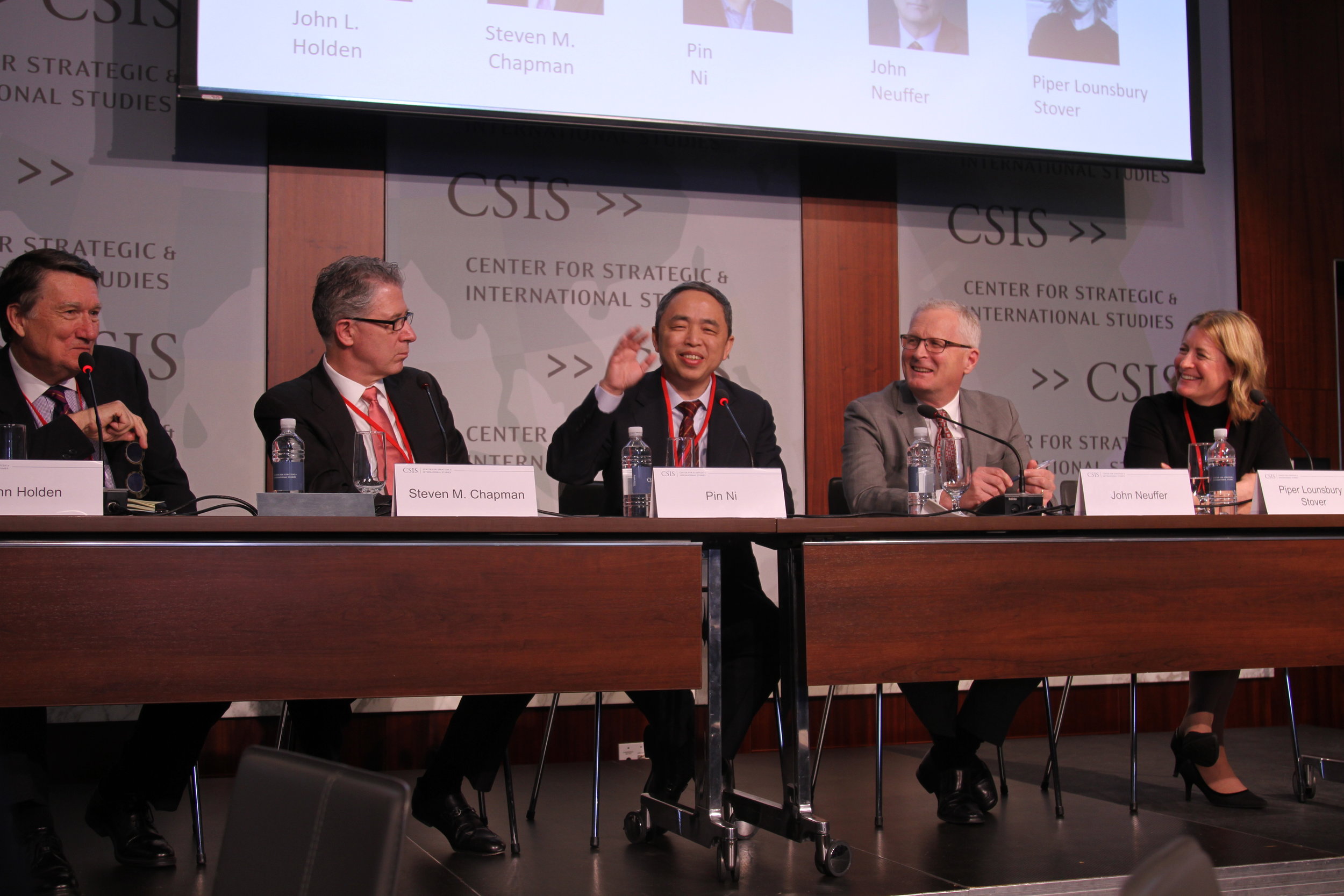Inventing and Investing in the Future: Insights from the Inaugural U.S.-China Innovation Forum
By Peter Shaw and Daniel Burke
On April 10, the Freeman Chair in China Studies at CSIS and the U.S.-China Business Council (USCBC) jointly hosted the first U.S.-China Innovation Forum. The kickoff event drew more than 160 attendees from media, industry, academia, and government. Through the course of five panels, American and Chinese experts from industry, finance, think tanks, and government discussed how to best foster, protect, and advance innovation in an increasingly complex global environment.
Photo Credit: CSIS
The event opened with remarks given by Scott Kennedy, senior advisor of the Freeman Chair in China Studies, Craig Allen, president of USCBC, and Secretary William S. Cohen, current board member of CSIS. Shortly after, the first panel commenced with a discussion on financing innovation. The panelists agreed that despite China’s economic slowdown, the Chinese market still presents advantages for both foreign and domestic investors. Chinese government subsidies and funding are abundant in the technology industry, pulling both capital and talent into the Chinese market. The sheer size and possibilities in this market is another advantage. As Michael Kuan of Kuan Capital stated, “To innovate, modern technology relies on modern market needs, and those needs are in China”. However, Joyce Chang of JP Morgan warned that the Chinese government still wants to maintain control over the innovation process and the market itself. This can be cause for worry, especially in terms of developing reputability and intellectual property protection.
The second panel discussed the execution of innovation. IP protection, argued John Neuffer of the Semiconductor Industry Association, is the lifeblood of innovation. The strength of the U.S. system in enforcing IP explains why most semiconductor production R&D still happens in the United States despite China being the fastest growing market for chips. Pin Ni, President of Wanxiang America, admitted that previously, China’s innovation environment was chaotic. However, as China continues to develop, business dynamics crucial for innovation require China to strengthen its innovation protection.
Photo Credit: CSIS
The third panel continued to discuss IP and standard-related issues. IBM’s Christopher Padilla acknowledged that IP protection has improved as a direct result of having more IP assets to protect in China, but that there is still a long way to go. Terrence Brady of Underwriter Laboratories Inc. mentioned that China is becoming more involved in writing international standards, but that the domestic standards system still is not fully open and transparent. China invites foreign companies to serve on committees to develop its standards, yet they keep MNCs at arms-length and denied full access to important draft documents.
Photo Credit: CSIS
The fourth panel focused on the healthcare sector. Jennifer Osika, Deputy Vice President of Pharmaceutical Research and Manufacturers of America (PhRMA), is optimistic about healthcare innovation in China due to the reforms the government has taken to streamline the regulatory framework. However, she cautioned that some measures were still in the process of implementation. Zhang Ligang of iKang and Shen Huaqiong of iMab Biopharma shared the same optimism from their own business perspective. Zhang emphasized China’s great potential in quickly adopting newly emerging technologies, and Shen emphasized China’s market potential due to it having the world's largest patient base and a changing funding structure. Shen also explained that the shared need between the United States and China in the healthcare industry could bring the two countries to closer collaboration. Microsoft’s Director of Health Strategy, Benjamin Shobert, pointed out that the competition in healthcare is still nascent compared to other sectors such as semiconductors, which means that it is possible the current open atmosphere could become less welcoming as Chinese firms advance.
In the final panel, Congressman Rick Larsen discussed innovation in the United States and steps we can take to boost our capabilities in strategic fields. Emphasizing that the United States should not embrace industrial policy, he declared, “We don’t need to out-China China, we need to out-U.S. the U.S.” He further explained that America should emphasize building its innovation ecosystem. The United States should focus less on what China is doing and more on the strengths and weaknesses of innovation here. For example, the United States has workforce development and training issues. Therefore, the United States needs to invest in both infrastructure and retraining policies and mechanisms. The United States faces challenges in the tech field, but only focusing on China will cause us to miss what makes the United States prosperous.
Photo Credit: CSIS
Three main conclusions emerged from the forum’s discussions. First, don’t panic. Although there are reasons to be worried about Chinese innovation efforts and its effect on American companies and industries, the United States continues to be a leader in most industries. Even as Chinese innovation capacity strengthens, there are an increasing number of opportunities for Americans in the innovation field. Second, the United States already has a multitude of tools to protect its intellectual property, the health of its markets, and national security. Third, the United States could do much more to strengthen its own innovation ecosystem at the federal and local levels.
The Freeman Chair in China Studies and the US-China Business Council look forward to the next U.S.-China Innovation Forum and will pursue other avenues of collaboration.
Click here for the complete video and audio clips of the event.



